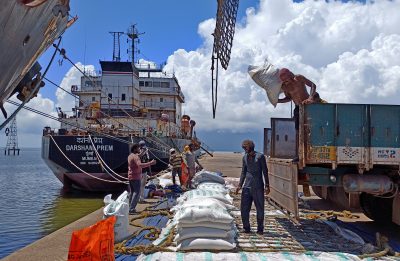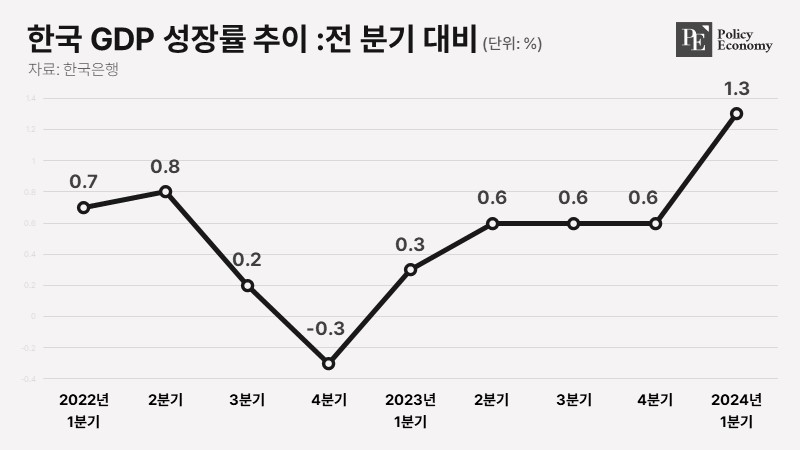[동아시아포럼] 인도의 쌀 수출금지 조치가 세계 식량안보에 미치는 영향
코로나19, 기후 위기 등으로 세계 쌀 부족 심화 인도, 자국 내 쌀 가격 상승에 수출금지 조치 주요국, 식량안보 차원에서 쌀 수급 조절
[동아시아포럼]은 EAST ASIA FORUM에서 전하는 동아시아 정책 동향을 담았습니다. EAST ASIA FORUM은 오스트레일리아 국립대학교(Australia National University) 크로퍼드 공공정책대학(Crawford School of Public Policy) 산하의 공공정책과 관련된 정치, 경제, 비즈니스, 법률, 안보, 국제관계에 대한 연구·분석 플랫폼입니다.
최근 세계 곡물시장에서 쌀과 밀 공급 부족 문제가 심화되고 있다. 이에 대해 각국의 언론들은 1966~1968년과 1972~1974년, 2007~2008년에 발생했던 세계적인 식량 위기가 재현될 가능성에 대해 우려하고 있다. 실제 지난 3년간 세계 곡물시장은 △코로나19로 인한 공급망 붕괴 △엘니뇨·가뭄 등 기상재해 △러시아-우크라이나 전쟁으로 인한 곡물 저장·운송시스템의 파괴 등으로 인해 심각한 위협에 직면했다. 특히 아프리카 지역은 내전과 대기근이 이어지는 상황에서 취약계층에 대한 식량 공급까지 차단되면서 기아 문제가 심각하다.

인도 쌀 수출금지 조치에 주변국 공급사슬 영향
식량안보에 있어 중대한 역설 중 하나는 정부가 반드시 이행해야 할 책무임에도 불구하고 시장의 역할과 영향력이 크다는 점이다. 식량안보를 위해 정부의 책무와 시장의 기능을 조화롭게 하는 것은 매우 도전적인 과제인 만큼, 대다수의 국가는 정부와 시장 간 상호의존적 관계를 유지하기 위해 힘쓰고 있다. 이러한 노력의 일환으로 ‘마테라 선언’을 들 수 있다. 지난해 인도네시아 발리에서 열린 G20 정상회의에서는 의제 중 하나로 식량안보를 논의하고 제로 헝거(Zero Hunger)를 목표로 제시한 마테라 선언의 이행을 촉구한 바 있다.
하지만 일각에서는 G20 의장국이자 세계 최대의 쌀 생산국인 인도가 세계 곡물시장의 불안정성을 개선하기 위해 리더십을 발휘할 수 있을지에 대해 우려를 제기하고 있다. 지난달 20일, 인도 정부는 쌀 생산량 급감으로 인한 가격 상승세를 진정시키기 위해 비바스타미 백미(Non-basmati white rice)의 수출을 금지했다. 이는 2024년 1분기 총선에 대비한 식량 가격 안정화 조치로, 인도 정부는 이번 결정이 세계 곡물시장과 자국의 소비자에게 미치는 영향을 최소화하기 위해 신중하게 접근하고 있다. 그러나 이같은 인도의 결정은 전 세계 곡물시장의 수급 불안을 가중시키는 결과를 낳았다.
이런 가운데 인도네시아, 필리핀, 베트남 등 3개국의 공급 사슬에도 관심이 집중되고 있다. 인도네시아의 경우 당초 인도로부터 공급받기로 한 쌀 100만 톤을 모두 수입할 수 있을지 불확실한 상황이다. 앞서 인도네시아 정부는 자국 내 쌀 공급에 차질이 발생할 경우 인도로부터 쌀 100만 톤을 수입하는 계약을 체결했다. 만약 계약대로 인도네시아가 쌀을 확보한다면 세계 쌀 시장의 가격 안정에 도움이 될 것으로 전망된다.
필리핀의 쌀 재고량도 중요한 고려사항 중 하나다. 필리핀은 세계에서 두 번째로 쌀을 많이 수입하는 국가로 그동안은 주로 베트남에서 쌀을 수입해 왔지만 최근 인플레이션이 심화하면서 식량 조달에 어려움을 겪고 있다. 이에 지난해 6월 취임한 페르디난드 마르코스 필리핀 대통령은 식량안보를 국정과제로 정하고 쌀 수입량을 늘리기 위해 인도와 협약을 체결하는 방안을 검토하고 있다.
베트남의 쌀 가격과 수출 추이도 주시해야 한다. 올해 베트남의 쌀 수확 전망은 낙관적이지만 세계 쌀 시장의 수급 불안으로 자국 내 쌀 가격이 상승할 경우 베트남 정부도 쌀 수출을 제한할 가능성이 있기 때문이다.
쌀 재고분 다량 확보한 중국·일본에도 관심 집중
세계 쌀 시장에 비상이 걸린 상황에서 국제사회의 시선은 자연스럽게 중국으로 향햐고 있다. 올해 중국은 폭염과 홍수로 인해 쌀 생산에 큰 타격을 입었다. 정확한 쌀 재고량은 국가 기밀로 관리되고 있지만 현재 세계에서 가장 많은 양의 쌀을 보관하고 있는 것으로 추정된다. 하지만 쌀 재고분이 지리적으로 분산돼 있어 중앙 정부의 접근과 통제에 한계가 있다. 더욱이 중국 정부는 식량안보를 정책적으로 중요시하고 있어 밀과 쌀 가격이 모두 상승하는 현재의 상황에 어떻게 대응할지 예측하기 어렵다. 만약 중국이 식량 위기를 예측하고 더 많은 식량을 수입하고자 할 경우 곡물시장의 불안을 증폭시킬 가능성이 높다.
현재 쌀 시장에서 패닉 바잉(panic buying)이 나타나는 상황을 고려할 때 일본이 2007년 식량 위기 당시와 같은 역할을 할 수 있을 것으로 보인다. 2000년대 일본은 쌀 시장 개방 이후 세계무역기구(WTO)의 요구에 따라 자국 내 쌀 소비량의 4~7%가량을 수입해야만 했다. 이 시기 일본의 쌀농사는 풍작이었기에 수입한 쌀은 몇 년간 창고에서 보관하다가 과자·미소 등 식가공품 혹은 가축의 사료로 가공하거나 해외에 원조식량으로 보내는 경우가 많았다. 2007년 식량 위기 당시 일본 정부는 필리핀과 쌀 협상을 시작했고, 이른바 ‘WTO 쌀’을 수출하겠다는 발표만으로 전 세계 곡물시장의 투기적 버블이 진정 국면에 들어서면서 쌀 가격이 하락했다. 현재는 쌀 재고량이 2007년보다 감소하긴 했지만 만약 일본이 50만 톤의 쌀을 공급한다면 패닉 바잉을 어느 정도 완화할 수 있을 것으로 전망된다.
USDA 낙관적 전망, “아시아 곡물시장 안정적”
한편 미국은 앞으로의 쌀 수급 상황을 비교적 낙관적으로 보고 있다. 미 농무부(USDA)는 지역에 따라 식량 부족 현상이 있을 수 있지만 전반적으로는 쌀 수급 부족으로 인한 식량 위기가 초래되지는 않을 것으로 예측했다. 이달에 USDA가 발표한 ‘세계 농업 공급·수요 추정치(World Agriculture Supply and Demand Estimates)’에 따르면 2023~2024년 마케팅 연도의 세계 쌀 생산량은 전년 대비 810만 톤이 증가할 것으로 추산된다. 반면 같은 기간 쌀 소비량은 아시아와 아프리카 지역에서의 수입이 줄어들면서 100만 톤이 감소할 것으로 예상된다.
엘니뇨로 인한 수확량 감소, 인도의 쌀 수출금지 조치 등 위기 상황에도 불구하고 아시아의 곡물시장은 놀랍도록 안정된 상태를 유지하고 있다. USDA는 “인도네시아와 필리핀이 충분한 쌀 재고분을 확보한 데다 중국이 쌀 수입을 줄이고 자국 내 재고분을 소진하면서 쌀 공급망에 긍정적인 영향을 미칠 것”이라고 전망했다.
쌀 가격은 기후 변화가 본격화되고 러시아-우크라이나 전쟁으로 인해 밀·옥수수 수출이 제한되기 전부터 오르기 시작했으며 앞으로도 최소 6개월에서 최대 1년까지 상승세를 유지할 것으로 전망된다. 특히 태국과 베트남에서 생산한 쌀은 톤당 100달러 이상 오를 것으로 보인다. 하지만 가장 중요한 문제는 쌀 가격이 얼마나 가파르게 상승할 것인지, 완만한 상승세를 유지한다면 어떻게 소비자의 혼란을 최소화할 수 있을지다. 이에 대해 전문가들은 지난달 인도의 쌀 수출금지 이후 곡물시장의 큰 충격이 없었다는 점을 미뤄볼 때 쌀 가격의 상승세는 점진적이고 제한적으로 진행될 가능성이 높다고 입을 모았다.
Does India’s disruption of the global rice market pose new threat to food security?
Both rice and wheat supplies are now facing alarming shortages. The prospect of another world food crisis that would rival those in 2007–08, 1972–74 and 1966–68 is front-page news. In the past three years, the world food economy has been severely stressed by COVID-19 supply disruptions, adverse weather, Russia’s escalation against Ukraine’s grain shipping and storage facilities and the rapid emergence of drought-inducing El Nino. Regional conflicts in Africa, which cut off food supplies to vulnerable populations, have become a constant.

The great paradox of food security is that only governments can ensure it, but markets must ‘do the heavy lifting’. Learning to manage this symbiotic relationship has proven a challenge for most countries.
Indonesia demonstrated the lessons it has learned when it steered the 2022 G20 Summit in Bali to a dramatic declaration that started with a primer on food security. It is uncertain if India, the current G20 chair, can provide similar leadership on calming an increasingly turbulent world food economy.
India’s rice export ban on 21 July 2023 needs to be understood in this context. Food security begins at home, and the general election scheduled for the spring of 2024 has politicians’ eyes focused on stabilising staple food prices. India will still try to manage the rice export ban carefully to minimise its impact on regular customers. Exempting par-boiled rice protects Bangladesh and a few African markets. Existing contracts for physical loadings are likely to be honoured.
As chair of the 2023 G20, and with Indonesia’s successful 2022 G20 Summit still fresh in mind, India seeks to balance domestic needs with export reliability.
As the Indian shock to the world rice market unfolds, three countries are in the spotlight.
First, the question remains whether Indonesia will receive the full 1 million tonnes of rice it contracted from India. If it does, that will calm the whole world rice market.
Second, the status of the Philippines’ rice stocks is crucial. A number of experienced technocrats in the Philippine Cabinet have likely planned for this contingency.
Third, Vietnam’s export patterns warrant scrutiny. While its crop outlook seems good, there is always the danger that the Vietnamese government might restricts exports in response to domestic hoarding. Managing price expectations in Vietnam will be critical.
In a rice emergency, all eyes inevitably turn to China. Its rice production has suffered significantly from heat and floods. The exact level of rice stocks is a state secret but they are by far the largest in the world. Still, they are dispersed geographically, which somewhat limits central government access and control. Food security in China is a high priority, and with both wheat and rice prices rising, it is hard to tell what the Chinese response will be. Any effort to pre-emptively procure more imports will spook the market.
In a real rice panic, Japan might play a similar role as in 2007. Then, the mere announcement by Japan’s prime minister that Japan would start negotiations with the Philippines to sell some of its surplus ‘ WTO rice’ was sufficient to ‘prick the speculative bubble’. This sent world rice prices sliding. Japanese rice stocks are smaller now than in 2007, but even an offer of half a million tonnes to the neediest buyers in the region could calm any panic buying.
Rice experts at the US Department of Agriculture (USDA) are reasonably optimistic the world can get through the projected rice shortages. In their August 2023 release of the World Agriculture Supply and Demand Estimates, world rice production for the 2023–24 marketing year is forecast to be 8.1 million tonnes larger than in 2022–23. World consumption is forecast to decrease by 1 million tonnes due to fewer imports by many countries in Asia and Sub-Saharan Africa. There will doubtless be some localised hunger from reduced consumption, but widespread rice shortages are not in the USDA’s forecast.
The Asian outlook is surprisingly reassuring considering El Nino and India’s partial rice export ban. A projected decline in China’s rice imports in 2022–23 and a subsequent large drawdown in domestic rice stocks should have a favourable impact. The USDA also expects Indonesia and the Philippines to come through the global rice shortages with ample stocks.
Rice is a more valuable commodity than before the start of El Nino and the Russian attacks on Ukraine’s wheat and corn exports. Rice prices are likely to rise over the next 6–12 months, perhaps by another US$100 per metric tonne for Thai or Vietnamese rice.
The big question though is whether the price rise will be gradual — giving consumers time to adjust without panic — or whether there will be a rapid spike. The fact that there has been little panic since India’s announcement in July gives hope that the increase in rice prices will be gradual and contained.
원문의 저자는 피터 팀머(Peter Timmer) 하버드대학교 개발학 명예교수입니다.




























